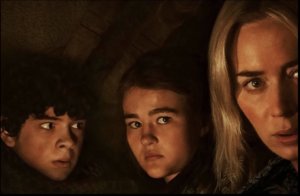Posts Tagged ‘film review’
THEY CLONED TYRONE, A No-Spoiler Review
Tudum, Neflix’s official fan site, calls THEY CLONED TYRONE a gonzo sci-fi caper. I watched it with my son last week, a second time with my husband last night. Here’s my review. I enjoyed this caper at least as much the second time through. THEY CLONED TYRONE is rated R for violence, nudity and language. This film is streamable on Netflix.
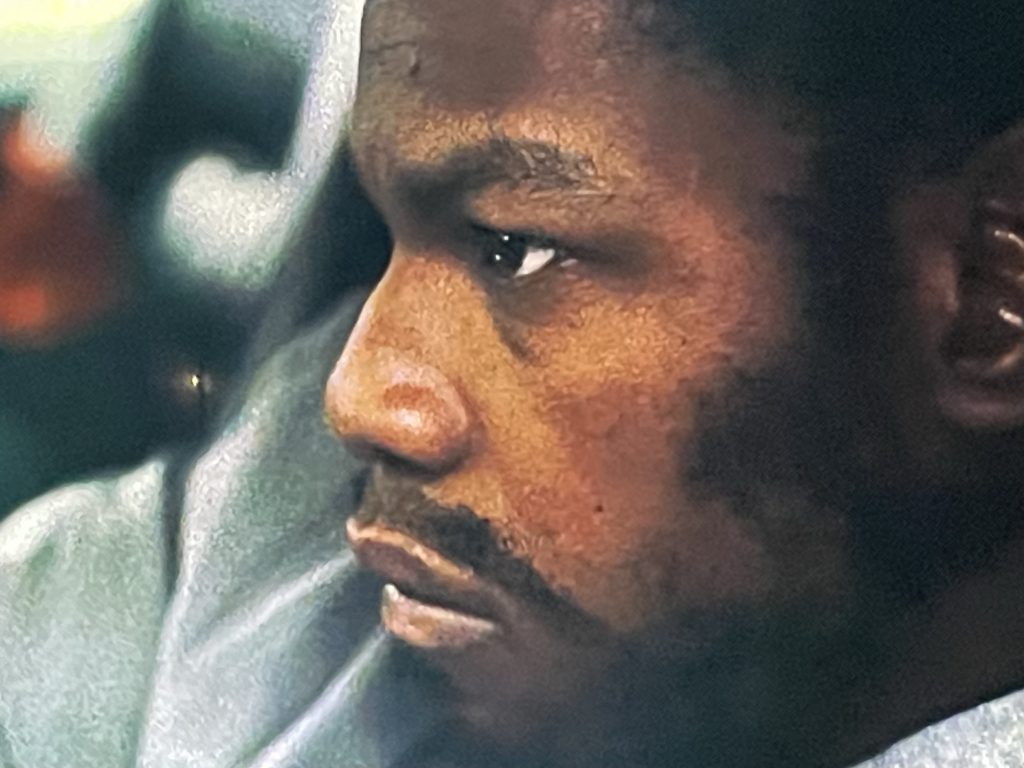
The Short Review
5 Reasons I recommend this film
- starring John Boyega, Jamie Foxx, Teyonah Parris, a fantastic trio, absolutely dynamic in all good ways
- authentic and gritty including design elements wonderfully contrasted in the 2 versions of “the Glen” portrayed
- a story that surprises…even knowing a clone is involved (see title), there are still some fantastic mysteries to solve
- THEY CLONED TYRONE was laugh-out-loud funny in parts, I found the dialogue and characters delightfully entertaining
- a serious social commentary worth contemplating
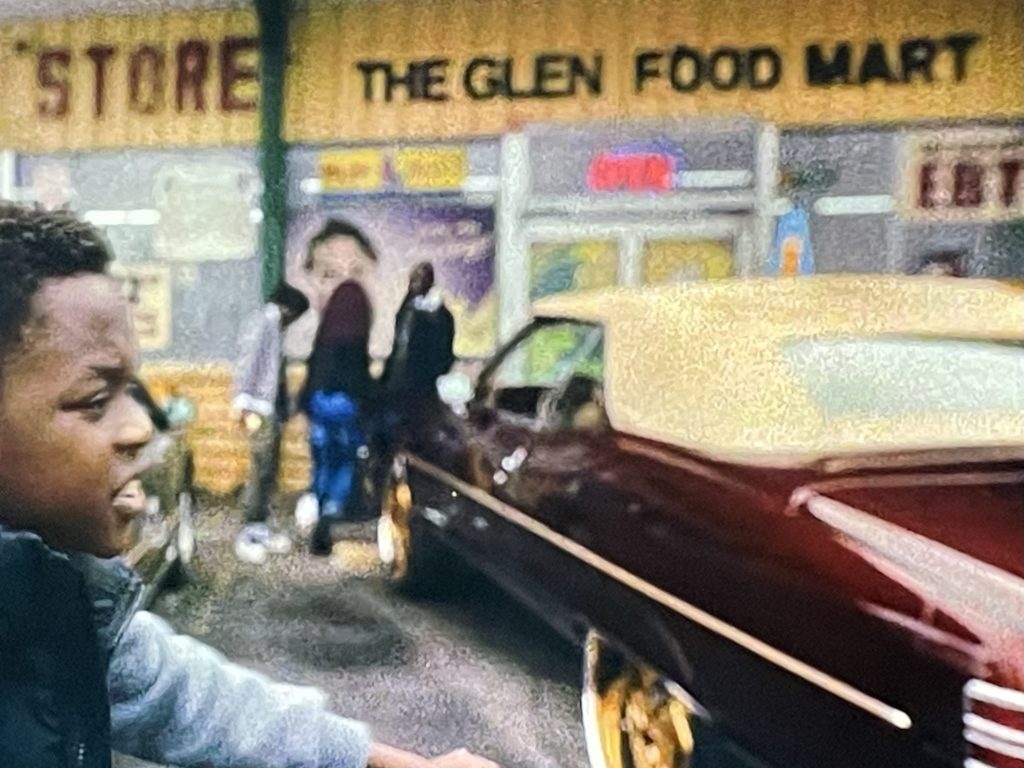
The Longer Review
When Jordan Peele decided to get into the film creation business and write/direct Get Out, Hollywood (and the general audience) sat up and took notice. Not only was Get Out entertaining in so many compelling ways, it was the fleshing out of an urban myth that a racially charged society like the US understood, even feared. Peele broke the mold with Get Out and then deepened his creative impact with Nope and Us, paving the way for creators like Juel Taylor. Taylor wrote and directed THEY CLONED TYRONE.
One of the things I loved about THEY CLONED TYRONE is that the narrative puts forward an allegorical reality in which systemic racism can be discussed in the real world. Moreover, it does this in an entertaining and thoughtful way. There is a scene early on, a face-off between the Slick, played by Jamie Foxx, and Fontaine, played by John Boyega, where Slick expresses his frustration about black on black violence in The Glen (the story’s setting–a poor black neighborhood of unknown location). To hear the phrase black on black violence verbalized in a narrative by a black character from the hood is a bold move by the filmmaker. He has to know that this idea has been taken up and championed by many conservative politicians, but rarely with appropriate context and compassion. However, when the Foxx character says it, I felt the sadness of the filmmaker’s commentary. It felt appropriately like a cry into the void.
Taylor didn’t overplay his hand with that line, but did leave the phrase vibrating throughout the rest of the narrative. By the finale of the film, the idea is turned upside down. I hesitate to say more because *spoilers*, but there are so many good questions posed in this film, I might just have to watch it a third time.
OKJA, Your Next Family Movie Night? My No-Spoiler Review
OKJA, directed by Bong Joon-ho, written by Joon-ho and Jon Ronson (from a story by Joon-ho) is yet another example of Korean film genius. This film is set in a speculative future (despite the film’s timestamp of 2007)…the scifi aspects of the story have to do with genetics. First, the short review.
6 Reasons OKJA Will Delight
- Streamable for free on Netflix, family friendly (I would rate it PG-13 for violence)
- Although there are Korean characters who only speak Korean (therefore, yes, you’ll have to read subtitles), much of this film is either visual narrative or the characters speak English
- Action-packed
- Funny and Heart-warming (the creature created for this film is cute and compelling)
- Thoughtful perspective on the food industrial complex
- With the child protagonist on a grand chase/adventure and with compassion at its core, this story feels like Studio Ghibli in all the best ways

Longer Review
Lately, when I look for something interesting and fun to watch, I gravitate toward Korean filmmakers. Why? They are some of the best storytellers around and Netflix is committed to working with them/putting their work out to the broadest audience. Moreover, Korean filmmakers don’t seem fixated on US/European political issues, which bore me these days. OKJA does touch on the industrial food complex…a global reality that is political. In particular, OKJA explores how meat is produced and processed for broad human consumption. But don’t let that stop you from watching this interesting and entertaining film. I think the questions that arise from the film are worth thinking about for every person on Earth, whether a vegetarian, vegan, or an omnivore. Kids watching this will also feel the implications of our “appetites”. It’s not a bad thing to help our youth understand that meat actually comes from creatures who live on this Earth with and among us. That’s a worthy conversation to have with our future leaders who will likely make choices for all of us about how we are to care for planet and creatures.

With an all-star cast, both Korean and US born actors inhabit this film. Stars like Tilda Swinton, Steven Yuen (The Walking Dead, Minari, Nope), Paul Dano (Little Miss Sunshine, The Batman, The Fabelmans), Yoon Je-moon (The Man Nextdoor), and Jake Gyllenhaal (Nightcrawler, Donny Darko) inhabit this universe. The protagonist, Korean actress Ahn Seo-hyun, is fantastic as the stoic caretaker of OKJA. She is the studio Ghibli-styled determined child who will not give up on her friend. This story is as much about loyalty and friendship as it is about food politics. I loved OKJA and I hope your family does too.

DON’T WORRY DARLING, A Film Review
DON’T WORRY DARLING is a feature-length film, streamable on HBO after a limited release in theaters. This film, produced and directed by Olivia Wilde, provides a semi-new twist on an old science fiction trope. I won’t say what that trope is in the short review, however it is likely to be sniffed out by the scifi fan. It’s pretty obvious. Also, as typical with HBO productions, the sex scenes are explicit and emotionally intense. I give it an R rating because of those scenes, otherwise, it might have been a film the whole family could watch and talk about. Ah well…

First, the No-Spoiler Short Review
5 Reasons DON’T WORRY DARLING is a fun watch
- Gorgeous highly stylized mid-century modern setting
- Beautiful actors
- The fashion and hair are worth the price of admission
- Eerie undertones and mystery that slowly ramp up tension
- Semi-cathartic ending

3 Ways DON’T WORRY DARLING missed the mark
- I’ve watched and read various versions of highly controlled utopias. The story trajectory of DON’T WORRY DARLING was predictable. Add a few cliches here and there…and its style begins to feel overwrought.
- This film tries to make a statement about marriage by catering to a type of male fantasy around men as providers and women as housewives/stay at home wives. It did not match up to others of this story type in complexity or power, like Atwood’s The Handmaid’s Tale
- I wasn’t convinced in the characters themselves, that Jack (played by Harry Styles) in particular, would make the choices he makes

Longer Review (beware of spoilers)
DON’T WORRY DARLING showcases the creative vision of director, Olivia Wilde, along with writers/screenwriters Carey Van Dyke, Shane Van Dyke and Katie Silberman.
In the film, Olivia Wilde puts to the screen a utopia in a Southern California desert, a place where beautiful couples live in a 1950s-like fantasy world. Think, Leave It to Beaver, but with racy sex.
Traditional roles underpin the community’s existence. The husbands work each weekday. The wives stay home and though some cleaning and cooking is required of them, they otherwise sip cocktails, take ballet lessons, swim, sunbathe and shop. Children are mostly absent with a few exceptions, but the overall picture is one of leisure and luxury. Hardly a problem exists until one of its female members (a secondary character) goes off the rails and displays what the leader of the community deems irrational, mentally disturbed behavior. The film audience knows that this woman’s rants are the beginning of an unravelling.
The main character, Alice (Florence Pugh) witnesses the suicide of the troubled woman, Margaret, someone she had considered a friend. In trying to help Margaret after she both slits her throat and throws herself from a rooftop, Alice is commandeered and quieted into submission by men in red jumpsuits who seem to police the community. After this, she falls under the treatment of the community’s doctor, is offered meds, and given electroshock therapy. The therapy backfires and causes Alice to remember her “real life”. Everything she is experiencing in this utopia is false, a virtual reality that her husband has committed her to, for reasons that were challenging for me to understand. In theory, her husband loves her and wants this ideal utopia for them both, but by the end, he is willing to subdue her himself, forcibly. My best guess is that he was wanting to give his wife a good life but could not in reality. In real life she is a surgeon, so some of the logic breaks down here because I could not figure out (on one viewing) how he was able to afford this virtual reality without his wife working. Possibly, the “work” he is doing each day is something illegal, and his secrecy about it is a trade he makes for a virtual paradise. However, he is basically imprisoning his wife and forcing her into an identity of his making. That is evil and perhaps Wilde is trying to show via hyperbole, how this can sometimes be the case in an actual marriage. However, the lesson feels forced to me as does the story overall.
Despite that, the film did entertain and I enjoyed the setting, clothing and hair, an artistic landscape with a story that almost measured up to the visual style.
12 MONKEYS A No-Spoiler Review
My son is visiting Wisconsin and after work, we are alternatingly choosing films to watch together. Two nights ago, we watched a horror flick he chose called Hereditary, which was decent, not awesome, but was made by the same film company that produced Ex Machina(which I loved and realizing now, I have never reviewed this flick on my site…must amend).
Last night, we watched 12 MONKEYS on Amazon Prime for $3.99. This film would probably be rated PG-13 today. No sexual content really, just creepy apocalyptic tension. And wow! This is still an awesome film and has aged well. Today, I asked my GenZ kid…What do you think? Would most GenZers like this film?
He said.
Absolutely. Yes.
It’s been a while since I’ve watched 12 MONKEYS, but given my vague memory of it, I thought…might be worth the time.
One pleasure, as an older film fan, was to remember Bruce Willis and Brad Pitt remarkably in the same film. Not sure it happened in any other, but what Terry Gilliam delivered on the screen between these two, was close to perfection. This is possibly Brad Pitt’s finest acting and if you’re a fan, you’re gonna have to watch. A few images below underlie my point.
First, my Short Review: 4 Reasons You Want to Watch 12 MONKEYS
- Weird and dystopian tale, echoing Blade Runner in tone and style.
- One of Terry Gilliam’s masterpieces
- Possibly Brad Pitt’s finest acting
- Bruce Willis playing his iconic gritty and misunderstood character
- Great storytelling
Just cannot get enough of these scenes, shots of these two iconic men, culture-impacting actors for the last 30 years.
And
The Longer Review
Sometimes when you re-watch a film like 12 MONKEYS, you wonder how it’s gonna age. As an older person, you think (because you have experienced this before), was I impressed because of something slightly superficial and trite, or was this film truly great? With this flick, you need not worry. 12 MONKEYS delivers on so many levels. First, it delivers on weirdness of setting, including its gritty urban reality. My son (25yo), who has watched Blade Runner understood the dystopian aesthetic of this world. He even commented on the similarity. That, in and of itself, makes me feel I am doing my job training up my children. Second, 12 MONKEYS delivers on story. There is a clear protagonist, a vaguely enormous villain (that proves to be more personal in the final scenes) and enough mystery to keep the audience in tension. Finally, there is weirdness and surprise and the best aspects of science fiction where the perspective being put forward from one or two of the characters absolutely blows up the assumptions and values of the audience. And, if nothing else, respect these images…bizarre and gorgeous. Terry Gilliam is a genius.
THE BATMAN, God and Justice. Warning: So Many Spoilers
Last night I had the privilege of watching Matt Reeve’s THE BATMAN. I enjoyed the film, though it was tough to watch, a tense experience. Graphic violence is implied more than shown, but evil and darkness are palpable in every scene. Not that the film isn’t a beautifully crafted story…the dingy special effects are stylized to evoke the brokenness of Gotham. They reveal a failing society in every frame. It’s pouring rain and night during most of THE BATMAN, and of those scenes shot in the day, the skies are gray.
Of course, this is a familiar setting for our comic book hero, the Dark Knight, but what is less familiar is the tone of utter hopelessness associated with that darkness. Violence plagues the city of Bruce Wayne. In the opening sequence, it is Halloween night and masked hoodlums run wild across Gotham causing mayhem, and at one point a gang of them threaten an Asian American man in a subway station, hitting too close to home for many of us. Halloween is also the night the Riddler commits his first murder.
The brutality of humanity is on display in THE BATMAN, begging the question: When is a society so corrupt, so evil, so far gone, there is no hope of renewal and it must be destroyed? This film earned a PG-13 rating. It’s possible a mature teen could watch this and grapple with the question posed above. It’s a hard question, but one that ought to be pondered by all of us.
The rivalry between Batman and the Riddler draws out themes of righteousness versus justice. In certain respects, both men are the same. Both are trying to root out corruption, Both are straining toward a just society. Batman roots out injustice by defending the good guys and working within the system. Though outside the formal police force, his link to Lt. Gordon cannot be denied, nor can anyone doubt his insider status as Bruce Wayne, the orphaned son of a beloved city father. The Riddler however, also an orphan, stands on the outside. He roots out evil by exposing it, by punishing via execution and making a public example of those who have betrayed justice. The Riddler’s first murder is the mayor of the city and subsequently other politicians and law enforcement, those caretakers of Gotham who have made their beds with the mob. Because of these assassinations and the attention he draws to corruption, Batman along with the audience are forced to focus on what is a massively broken system at the highest levels of the city.
The audience wonders whether ANY politicians or police are clean in Gotham, and can such evil be undone when the gatekeepers of justice have become those who perpetrate injustice? The Riddler sees no way out but total destruction.
On the narrative journey, Batman faces truths about his own father. The idealism with which he has viewed his parentage is shattered, evoking for me the psalmist’s words from Psalm 14, text lifted by the Apostle Paul and placed in his letter to the Romans.
The fool says in his heart, “There is no God.”
They are corrupt, they do abominable deeds;
there is none who does good.
2 The Lord looks down from heaven on the children of man,
to see if there are any who understand,
who seek after God.
3 They have all turned aside; together they have become corrupt;
there is none who does good,
not even one.
Why do I include this? In the film, I think Reeves is trying to make a theological point. I bend toward theological rather than philosophical because the powerful reality (loaded imagery) at the end of the film is a flood…as in Noah and the Biblical account of the destruction of evil.
In THE BATMAN, the Riddler has set up bombs that line the seawall on Gotham’s perimeter. The Riddler has determined that Gotham is irredeemable. Gotham must die, drown and be cleansed of its evil. Only then will it be reborn. A flood to destroy evil? This is as old a tale as humanity, understood within Judaism, Islam and Christianity. There comes a time when a civilization is so broken, every living thing has to be destroyed in order for evil to be rooted out. The Riddler sets himself up as God and judge. He determines that Gotham is a total loss. Total destruction is the ONLY remedy for its evil.
Batman represents another side of this argument. Don’t miss the fact that Selina (the Catwoman character wonderfully portrayed by Zöe Kravitz), tries to coax Batman to remove himself permanently from Gotham. I can’t recall her final words to Batman precisely, but they were something like…staying here and trying to save Gotham will kill you.
That comment is an homage to a redemptive sacrifice and Batman as Christ figure…sort of…The audience already knows how much life has been sapped out of the young Bruce Wayne because of his mission to avenge his father, but also to help Gotham. Batman’s motives are often mixed here. Interestingly, this Batman, the Reeves’ Batman grows. He realizes that vengeance is not the full story of how he must respond to evil. To truly honor his dead father and mother, he must do more. He must minister good to the people of Gotham. Two images of Batman in the final scenes make my point. One is him diving into the abyss, lighting his flare and leading innocent people by hand, out of the flood, out of judgment. The other is him helping a wounded girl on a stretcher and holding her hand as she seeks his assurance and is flown away to safety, to healing. Reeves connects the hero, the savior, to humanity with that touch. Redemption in this case is a touch that is gentle and personal, the opposite of violence. Batmas has crossed over from vengeance to love.
The Russia Ukrainian War is raging as I write. Yesterday, Russian planes targeted a shelter in Mariupol, a place holding hundreds of children and women. On the ground on either side of this structure, the Ukrainians had written in Russian the words “children” in very large script, large enough to see from the air. How does one grapple with the bombing of this place, with the destruction of so many innocents? (The number of dead is still undetermined…I will correct this when the fog of war has dissipated.)
Update: on March 25, it was believe that 300 had died in the bombing. In early May, after a thorough AP investigation, it was revealed that 600 likely died in Mariupol theater airstrike.
So, I end with this image, Jesus of Sinai, Pantocrator, an icon from the the 6th century. For Christians of the 6th century, most of whom were illiterate, icons like this were essential to their faith because embedded within each icon are theological truths. For them, looking at an icon was like reading a holy text. With Jesus of Sinai, notice the weird lighting on his face, one side darker and one side lighter. That is intentional. Why? The post-modern viewer might not discern what his face represents but to early Christians, they represent two sides of the creator as God looks out over humanity. If you put up your hand and cover one side of the Messiah’s face, you see a bright and compassionate mouth and eye. When you cover the other side, you see a darker eye, an angry glare. The iconographer and the theologians of that time understood that both are sides of God and both are legitimate responses to evil. The story as laid out in the Bible is of God grappling daily with a society gone wrong. On one hand, he is merciful and forgiving, on the other, he is vengeful and ready to punish, to eradicate evil.
Current people of faith, people like me, struggle with that darker view of God, but we might do well to ponder it. Noah and the flood tell the story of God as do Jesus and the cross. And here we see the author of the new Batman film exploring both reactions to evil, but favoring mercy in the end.
We live in a complicated world, but some truths/questions find their way into our art, even if that art is embodied by a comic book character.
Kudos to Reeves for attempting something really big in his portrayal of THE BATMAN.
SPACE SWEEPERS, A No Spoiler Review

5 Reason to Watch Space Sweepers, The Short Review
- characters, they’re funny, quirky and smart…They reminded me of many beloved STAR WARS characters
- Special effects, on par with cinematic space opera’s like Star Wars
- Family friendly, nothing offensive for parents trying to figure out what to show their kids
- Excellent space battles
- An ultimate choice for the main character(s) that packs an emotional punch
 The Longer Review
The Longer Review
This film assumes a space opera vibe and so reminded me of Star Wars, yet felt original. The pacing of this screenplay gave exactly the right amount of info while embedding a few nuggets that made me go back a rewatch portions. That was rewarding and I loved the heartbeat of the story’s core…the transformation of a rogue…think of Han Solo and his journey.
Not that this story only bleeds a happy ending. There is a tragic trade that takes place, a brutal choice for the main character. However, the overall adventure ranked above my expectations. When I’m streaming something online like this, I’m not expecting brilliance, but when it’s Korean made, I am coming to expect top-notch production. The Korean film industry is doing something right by focusing on great storytelling and upping the game at every turn when it comes to investing in the visual feast. SPACE SWEEPERS is no exception.

I will continue to seek out, watch and review Korean-produced scifi/horror/speculative fiction because in the last 2 years or more, the flow of great content is undeniable. For more Korean-productions that I’ve reviewed, see:
KINGDOM, A Review of a Korean-Made Masterpiece
SQUID GAME, A Review without Spoilers
TRAIN TO BUSAN, A No Spoiler Review
DUNE Part 1, The film. A No-Spoiler Review

In a similar way that Peter Jackson pleased both the non-reading audience and the hyper fan of the LOTR books, it looks like Villeneuve will do the same for the his audience and fans of the novel, DUNE.
DUNE, the film, is the first of two. It’s only about half of the novel (yet another reason to entice your teen to read the novel), and there could be more films if Villeneuve decides to continue with the novel’s sequels. We’ll see how that goes. The later books are brilliant but probably more challenging for the average audience member to consume. Herbert’s world is a complex and mostly unhappy place on almost all counts.
First, The Short Review of DUNE
5 Reasons to See this Film, Especially if you are a Scifi Fan…
- Mostly pitch perfect and accurate (close to the novel) storytelling
- Herbert’s DUNE is a foundational work in the scifi genre and has a huge international following. Without DUNE, Star Wars might never have been made.
- A vision within the story that transcends culture and era
- Great casting
- An epic visual feast
Now, for the Longer Review…
If you want to go deep, super deep on DUNE, there are papers written, blog posts and articles that speak to why the story DUNE is one that has reverberated in many cultures, especially subjugated cultures, since it was released in 1965. This article is a good one, in case you want more breadth about the history. Click on the link for the Guardian’s penetrating reflection. DUNE article, Guardian.

True, the viewer is only getting a third of the character depth in the film version and for that reason, I encourage all to read (or re-read) the novel. It ages well. But, even if you don’t read the novel, Paul, Leto, Jessica, Duncan, Kynes and the Fremen come across very close to the novelist’s vision. I had two observations of change that caught my attention: Villeneuve did not portray the Atreides’ mostly male in-house staff accurately in terms of their suspicion of Jessica as the betrayer. Their suspicion of the one woman in the mix comes through in the novel, not in the film. Also, the gay Baron Harkonnen is a known child predator in the novel. I can guess there are many reasons Villeneuve decided to forgo this portrayal of the only gay character in the story world. Let him be obese and disgusting in the visuals, but diminish his child predator persona. That seems like a wise decision on many fronts.
The portrayals I loved:
Arakkis, the worms, the Fremen, the sitch, the general feeling of the Bene Gesserit, the Harkonnens, the Sardaukar, the ornithopters, Arrakeen, the costumes (including the stillsuit)…these are all perfect, as are the actors’ portrayals of their characters.
Overall, DUNE was worth the time and money. I highly recommend this film.
A QUIET PLACE II, A No-Spoiler Review
Worthy of a trip to the movie theater. I say yes!
A QUIET PLACE II was the first film I watched in a theater after receiving the COVID vaccine. It was a joyous occasion on many levels and worth a trip to the theater. The suspense and scare moments are best viewed when in a large, dark room, alongside a bunch of others who will scream in unison with you. We ventured into a theater in Madison, Wisconsin last night, our mask mandate having been lifted the day before. (Dane County has one of the highest vaccination rates in the country).
Here are 5 reasons this film is worth the price of the ticket:
- This is true scifi (in the spirit of Ridley Scott’s Alien, AKA monster versus human)
- The storytelling is intimate in the best possible way, focusing on one family scrambling to survive in a nearly impossible world
- Jump out of your seat moments, but without the extreme gore often found in the horror genre
- A longer story arc that builds tension and keeps the audience longing for more
- A dynamic deaf actress who plays a deaf character. An amazing role and an amazing performance by Millicent Simmonds
A QUIET PLACE II is rated PG-13. Mature teens could handle this if they like horror. Again…this is not gory horror, but it will likely give little tykes nightmares.
I must say, the group of us were giddy and joyful to be walking into the theater again after so many months of Netflix and Amazon Prime and Disney Plus, etc, etc, viewing by ourselves in our little hovels. The theater felt glorious and expansive.
Some economists ponder whether or not the movie theater will die as a result of our streaming habits (already in process before Covid). If last night is any indication, I would say no. Some films need to be viewed in community, and in a massive, dark space.
A QUIET PLACE II did not disappoint.
All of us in our party had see the first installment. All of us had been pleasantly surprised with the quality of the story in that first film. Always suspecting the sequel will be lame, we didn’t venture into the theaters until we heard from critics and viewers that this second film was both consistent with the vibe of the first (did not lose its heart) yet deepened the overall tension. A third installment is being shot as I write.
I highly recommend you view the first film before going to the second. Here is my review of A QUIET PLACE
You can rent this first film on Amazon Prime for $3.99.
After which I highly recommend you view the second film and be prepared for a few jump-out-of-your-seat moments and a wonderful theater experience overall.
TRAIN TO BUSAN, A No Spoiler Review
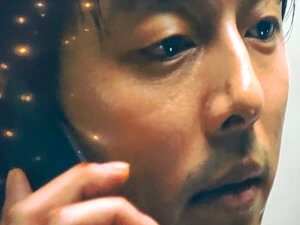
TRAIN TO BUSAN, set in Korea, is subtitled for English (and other language) speakers. This film was written for the screen by Sang-Ho Yeon and Joo-Suk Park and directed by Yeon. The film would probably receive a PG-13 rating for gore, the zombie kind, nothing worse that what you might see on AMC’s The Walking Dead. You can view this film for free if you are an Amazon Prime member. I loved it. In fact, I think the writing is brilliant.
Click here for the film’s trailer.
 Short Review. Five reasons I highly recommend TRAIN TO BUSAN
Short Review. Five reasons I highly recommend TRAIN TO BUSAN
- Perfect writing/storytelling, including the pacing that ramps up quickly at about 10 minutes in
- Sympathetic characters. The father/daughter story at the heart puts this zombie flick in a category above most others
- Another fresh setting. By now, if you’ve read a few of my reviews, you know I am an advocate of consuming stories told outside of the Hollywood bubble
- Once the action starts, it doesn’t stop and much of it takes place in the close confines of a train or a train station
- A pitch-perfect ending
Longer Review
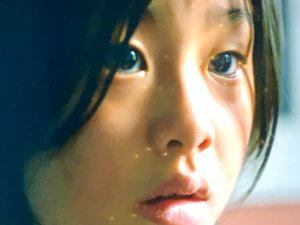
Seok-woo, a divorced father of one 10yo (or so) daughter, Soo-an, is a fund manager who works long hours. While he works, his mother cares for his daughter. They are based in Seoul, Korea. On the day the audience meets this family (the first minutes of the film), Soo-an is anticipating her birthday on the following day. She longs to be with her mother on her birthday. The problem, her mother lives in Busan, so Seok-woo must decide if he will accompany his daughter to Busan during a time when he is overwhelmed with work. He decides he will. In the first minutes, the audience has learned he has NOT been the most attentive father due to his demanding job. Is it guilt or something else that urges him to make this decision?
The decision is a sacrifice from his perspective, though he assumes he will be able to go very early in the morning, deposit his daughter in Busan and still return to Seoul to work a half day. The train trip (normally) is about 3 hours.
However, as they embark on the journey, a few unusual situations emerge, scenes the audience anticipates and knows are signs of something gone wrong.
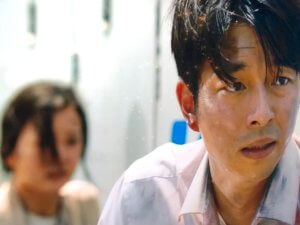
The rest of the narrative is not a simple zombie story. Seok-woo must fight and learn to sacrifice, not just for his daughter, but for others. While he journeys, he will have many teachers, including his daughter. Amid all the stress, he grows and changes.
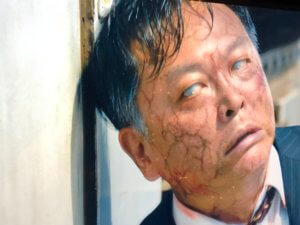
EQUILIBRIUM, A No Spoiler Review
During COVID, I have been watching older science fiction films, whose theatrical release I might have missed. EQUILIBRIUM falls into that category. Written and directed by Kurt Wimmer, starring Christian Bale, Sean Bean, Taye Diggs and Emily Watson, this film is rated R for violence, released in 2002. You can rent it as an Amazon Prime member for 4 dollars.
I recommend this film. It’s not the most thoughtful science fiction around, but it was entertaining on a few levels.
Short Review, 4 Reasons to watch
- Christian Bale gives a nice performance
- The one idea that drives the plot does create tension and makes the audience think at least a little…(see longer review)
- Stylized fight scenes–if you like martial arts/Matrix type battles
- Tight, linear story…easy to follow (given I just watched Tenet in the theater, it’s nice to watch a film that is relatively straightforward)
Longer Review
Earth exists in a dystopian reality, post WWIII, led by a man the population calls Father, though the ruling powers are likely something broader than one man. These decision makers have determined that Earth will not make it through another world war and have created a rigid society for the sake of survival. Emotion is outlawed, so are all things associated with emotion, in the film’s case: art, music, nostalgia items, love/affection, sensual pleasure, pets. The ruling class gives the population a drug to dampen emotions. Most faithfully take their doses a few times a day, including Bale’s character, John Preston. Preston is called a cleric, which the audience learns is a highly trained enforcer of the government’s anti-emotion policy. He roots out the rebels and those who indulge in art of all types.
The incident that brings upheaval into Preston’s life is when his partner Partridge, played by Sean Bean, steals a poetry book they had confiscated. Preston confronts him when he catches Partridge reading Yeats for his own pleasure. He is sentenced to death, but not before he reads a few lines of poetry out loud. Soon after, Preston discovers Patridge’s lover, played by Emily Watson. When he realizes that his former partner had gone down this road toward emotions, even falling in love…it seems, he cannot go back….something in him is triggered.
The unraveling continues as Preston dreams and recalls his wife’s conviction and execution. She was caught “feeling” outside the bounds of what the society permitted. His son is a rigid rule keeper, but his daughter is obviously more emotional and possibly disturbed (who wouldn’t be in this world?). Preston stops taking the drug and begins to truly feel a lot more. His new partner, Brandt, played by Taye Diggs, begins to notice his odd behavior. In the meantime, the rebels begin to recruit Preston. They want him to kill Father.
There is a strange interaction between Preston and the leader of the rebels where the leader makes sure that Preston cannot allow himself to feel if he is going to do the job he needs to do. The leader also indicates that he himself buried his feelings. That raises an interesting question about feelings and soldiers who are called upon by society to perform a “justified” killing. The audience can see in this a reflection of Father’s maintenance of the population…Father has told his followers that they must not feel in order to perform righteously. I think the audience is supposed to ponder this and reflect on what it means to kill another human being (like killing the spirit of the person by outlawing art!), but the interaction does pass by pretty quickly and there is no further discussion on it. Moreover, many people die in this film, so if we’re supposed to feel horrible about murder/a crazy amount of killing…hmm…not sure.
There are almost zero female characters in EQUILIBRIUM, which begs the question…
Is a non-emotional world a place where women have a hard time existing? I suspect so, at least in this film world. All of the female characters who have significant screen time (which isn’t much) are in the rebel category. Even Mona Lisa cannot exist in this world. (Da Vinci’s masterpiece is destroyed in an early scene). I appreciated the Emily Watson character, but she is one among six guys who dominate every scene. I realize a lot of folks don’t care about this issue…but I like to contemplate…Does it have to be this way? Would this film say something deeper and broader about humanity if one of the hardcore cleric characters was a woman? Or maybe the filmmaker was showing us what a world might look like without women, without mothering, nurturing and emotional connection…and maybe without them…art could not exist. That is an interesting idea, but I don’t think this film quite got us there.
Good science fiction does often grapple with the question, what does it mean to be human? The equilibrium sought out by the government in this film, is tentative and only possible because of the numbing of the population through a constant intake of a drug. EQUILIBRIUM portrays characters who will forego taking the drug, are willing to die and choose to sacrifice all for the sake of feeling. Art, poetry, music, love, affection and warmth in relationships…we cannot be human without them. We cannot live without them.
For that reason, I found EQUILIBRIUM a hopeful picture of humanity. Love, creativity and expression will burst forth. It cannot be contained. It can never be fully squelched and is a hopeless task of any government to try to do so.
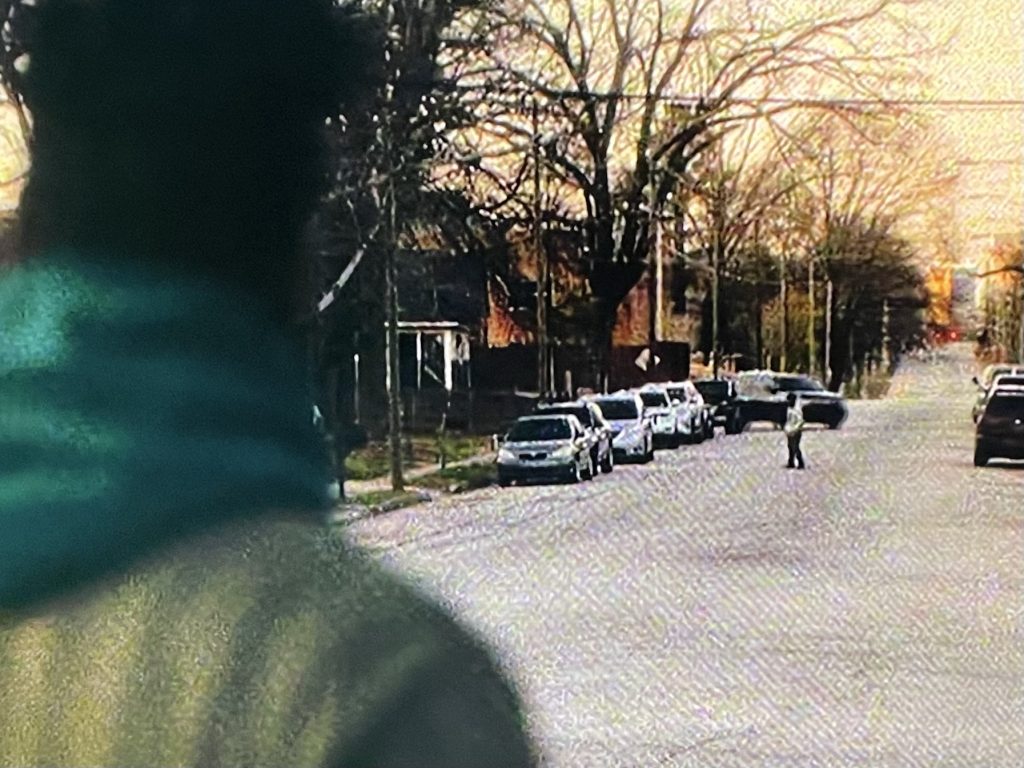



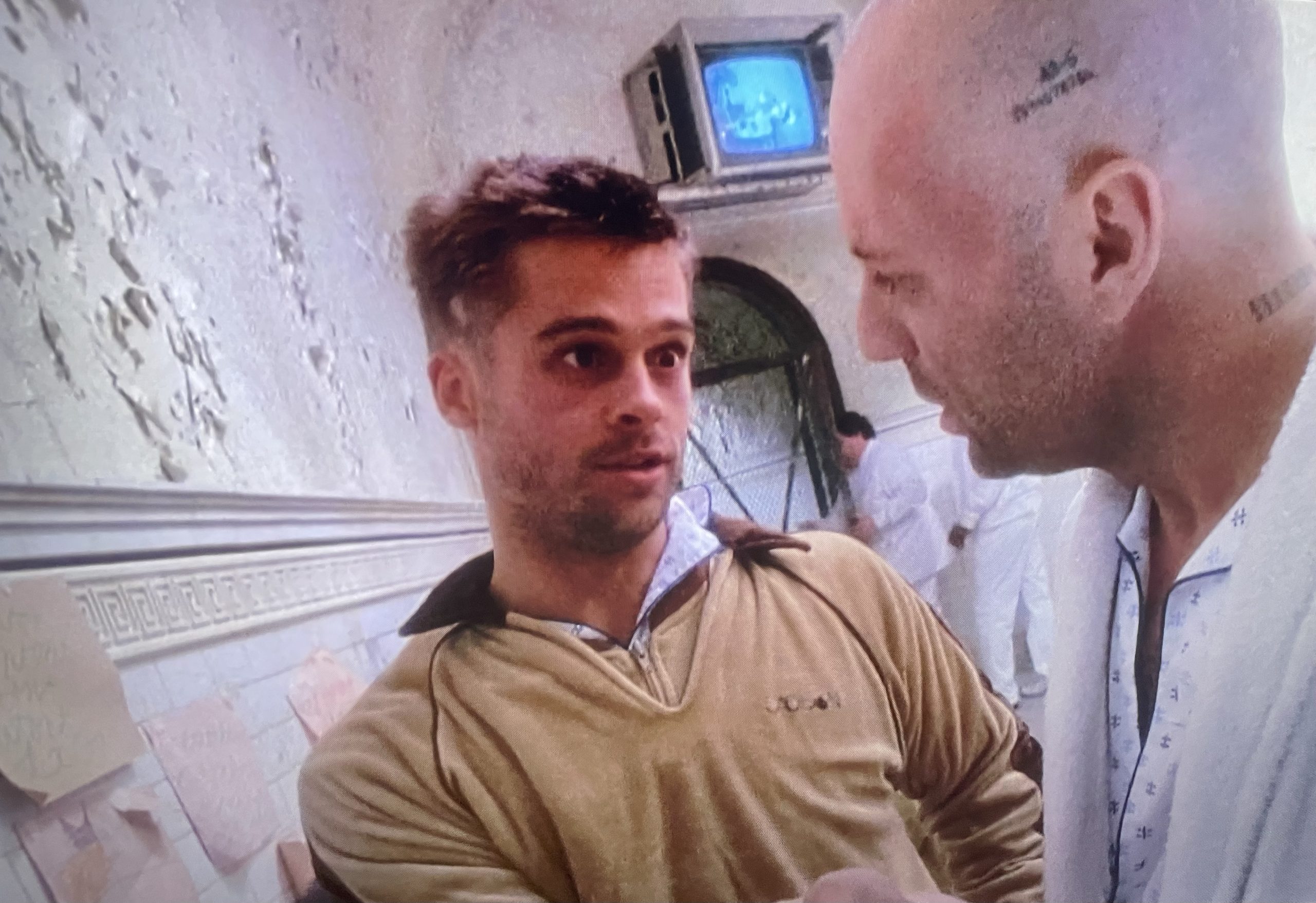




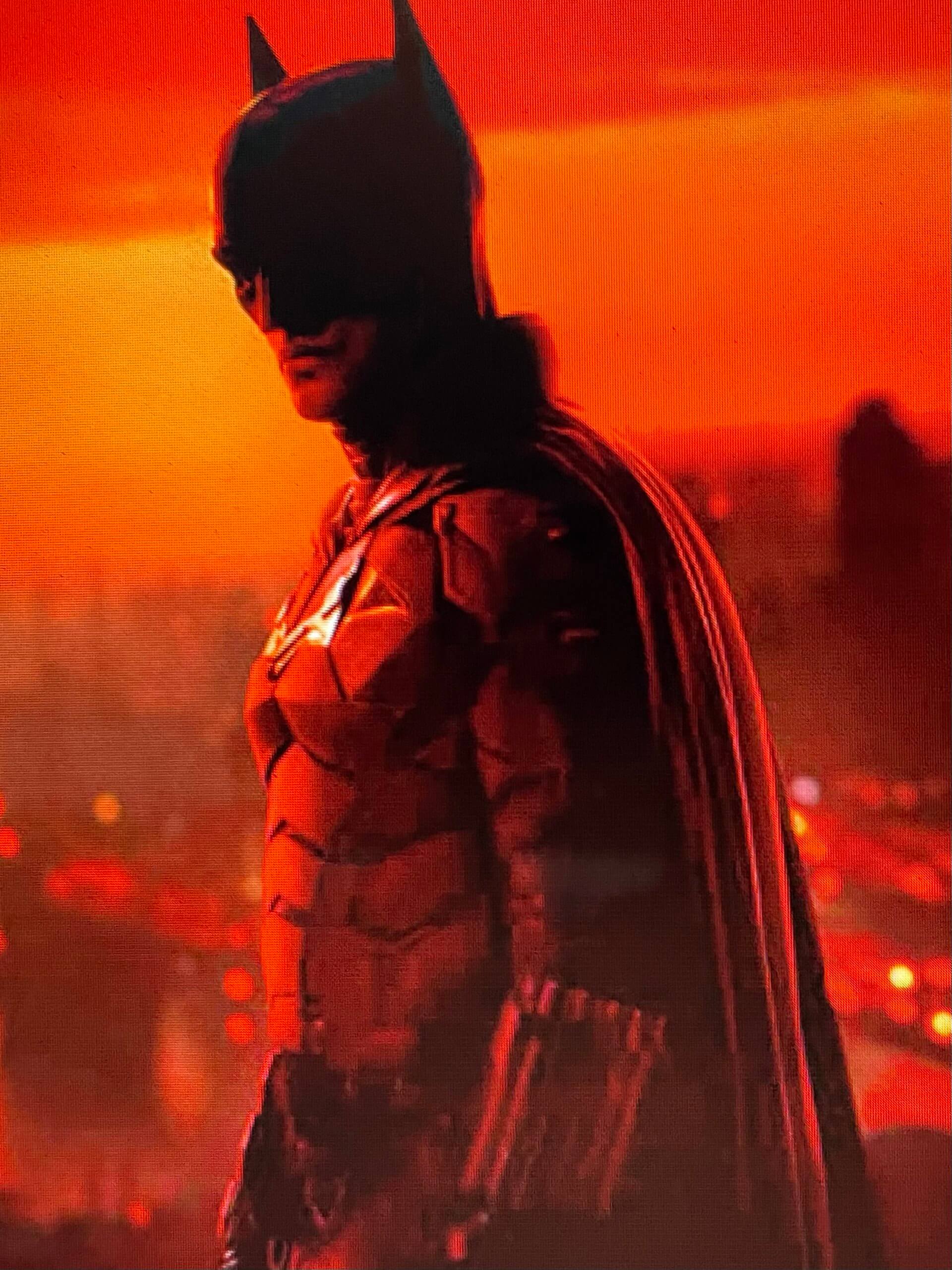


 The Longer Review
The Longer Review


